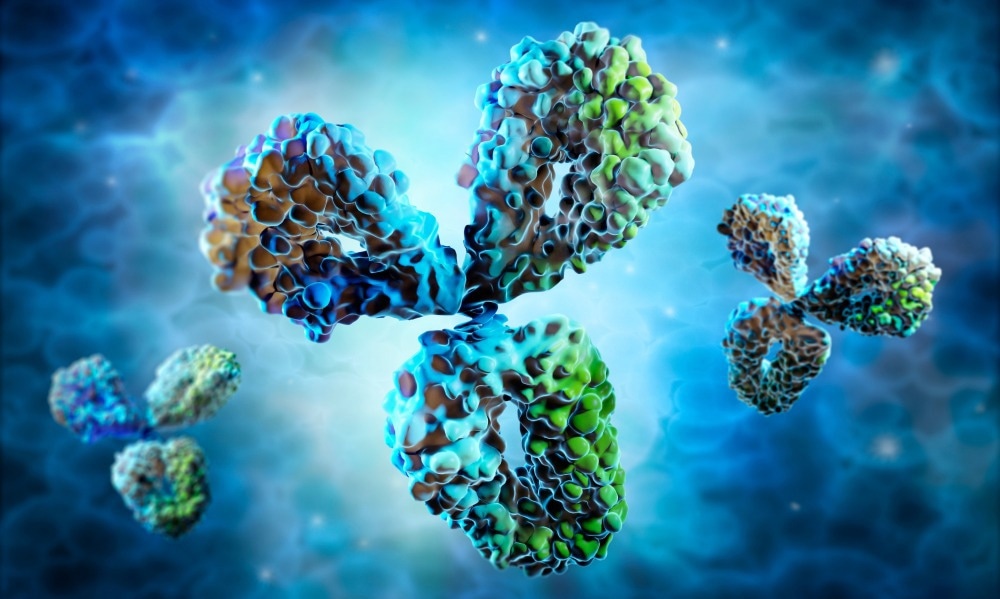In a recent study published in the journal Nature, researchers investigate whether pairs of unrelated B-cells of naive, unswitched, memory and plasmablast phenotypes that have similar heavy chains also have the same light chains.

Study: Functional antibodies exhibit LIGHT CHAIN COHERENCE. Image Credit: peterschreiber.media / Shutterstock.com
Background
Grouping antibodies by function has been a challenge, despite that. Theoretically, antibodies that perform the same function should have similar epitopes and complementary paratopes. However, while the in vitro assaying of antibodies for specific antigen binding is relatively more straightforward, only a small number of antibodies can be assayed for their neutralizing activity.
Clonotypes are groups of antibodies from a single donor that originated from a common ancestral recombined cell. Similar clonotypes performing identical functions have been found within and between individuals.
Studies involving influenza, Zika, and human immunodeficiency virus (HIV) have revealed that antibodies exhibit some fidelity in their heavy and light chain genes. However, light chain coherence, which is the occurrence of similar light chains in unrelated B-cells not belonging to the same clonotype with similar heavy chains, has not been examined.
About the study
In the present study, researchers sequenced full-length antibody genes from 1.6 million paired B-cells of naive, unswitched, plasmablast, and class-switched memory phenotypes obtained from peripheral blood samples donated by four unrelated individuals. The sequences covered the leader region of the V gene and parts of the constant regions used to determine the subclass and isotype of the antibody.
The sequences were divided into naive and memory B-cell groups based on the somatic hypermutations occurring outside the junction regions estimated from the V gene alleles inferred for each donor. Antibody sequences not exhibiting mutations were considered naive, and the others were considered memory B-cell sequences. Flow-cytometry sorted categories were used to confirm these assignments.
Pairs of B-cells with similar heavy chain V genes and length of third complementarity determining region of antibody heavy chains (CDRH3) were separately compared for naive and memory cell types to determine whether the light chain genes were also similar.
Under the assumption that antibody recurrences would arise from common recombination events, the junction sequence was analyzed by aligning the antibody sequences to V(D)J reference sequences. This allowed the researchers to determine whether observed recurrence rates were comparable to the rates expected by chance.
Simulations were also used to predict the number of recurrent naive antibodies. The recurrent antibodies were also compared with arbitrary antibodies to determine the complexity of junction regions.
Study findings
The results suggested 82% light chain coherence in different origin memory B-cells with the same heavy chain genes for the V region and a CDRH2 amino acid identity of 100%. In comparison, naive B-cells, which have not undergone functionality selection and do not contain somatic hypermutations, exhibited only 10% coherence in their light chains.
Thus, light chain coherence likely co-occurs with heavy chain coherence in memory B-cells. These cells are formed from peripheral and thymic selection and produce functional antibodies.
Analysis of independent datasets related to coronavirus disease 2019 (COVID-19), multiple sclerosis, Kawasaki’s disease, and other diseases suggested a 93% light chain coherence in memory B-cells. However, pairwise comparisons of the present data with other independent older and more recent data revealed a 70% light chain coherence, thus eliminating the possibility of these results being explained by cross-contamination.
Furthermore, random swapping of 10% of the memory and naive B-cells resulted in 82% light chain coherence for memory B-cells and 17% coherence for naive cells, thus ruling out possible cell misclassification.
Comparisons of the junction regions revealed that recurrent antibodies, both memory, and naive B-cell types, have significantly fewer inserted bases and comparatively less complicated junction regions than arbitrary antibodies. This increases the probability of chance recurrences.
Recurrent antibodies with inserted nucleotides continued to exhibit light chain coherence compared to naive antibodies. This suggests that all functional antibodies, irrespective of their complexity, exhibit light chain coherence and only differ in frequency.
Conclusions
Overall, the current study reported that light chain coherence is ubiquitous in memory B-cells, while recurrence in naive cells is purely a function of chance.
Light chain coherence is correlated with selection and acquired functionality. This observation explains why it is less common in naive B-cells and more prevalent in memory B-cells that undergo central and peripheral selection upon antigen exposure.
Furthermore, the recurrence of naive and memory B-cells is associated with reduced junction complexity in recurrent antibodies compared to arbitrary antibody junction regions, thus explaining their recurrence rates.